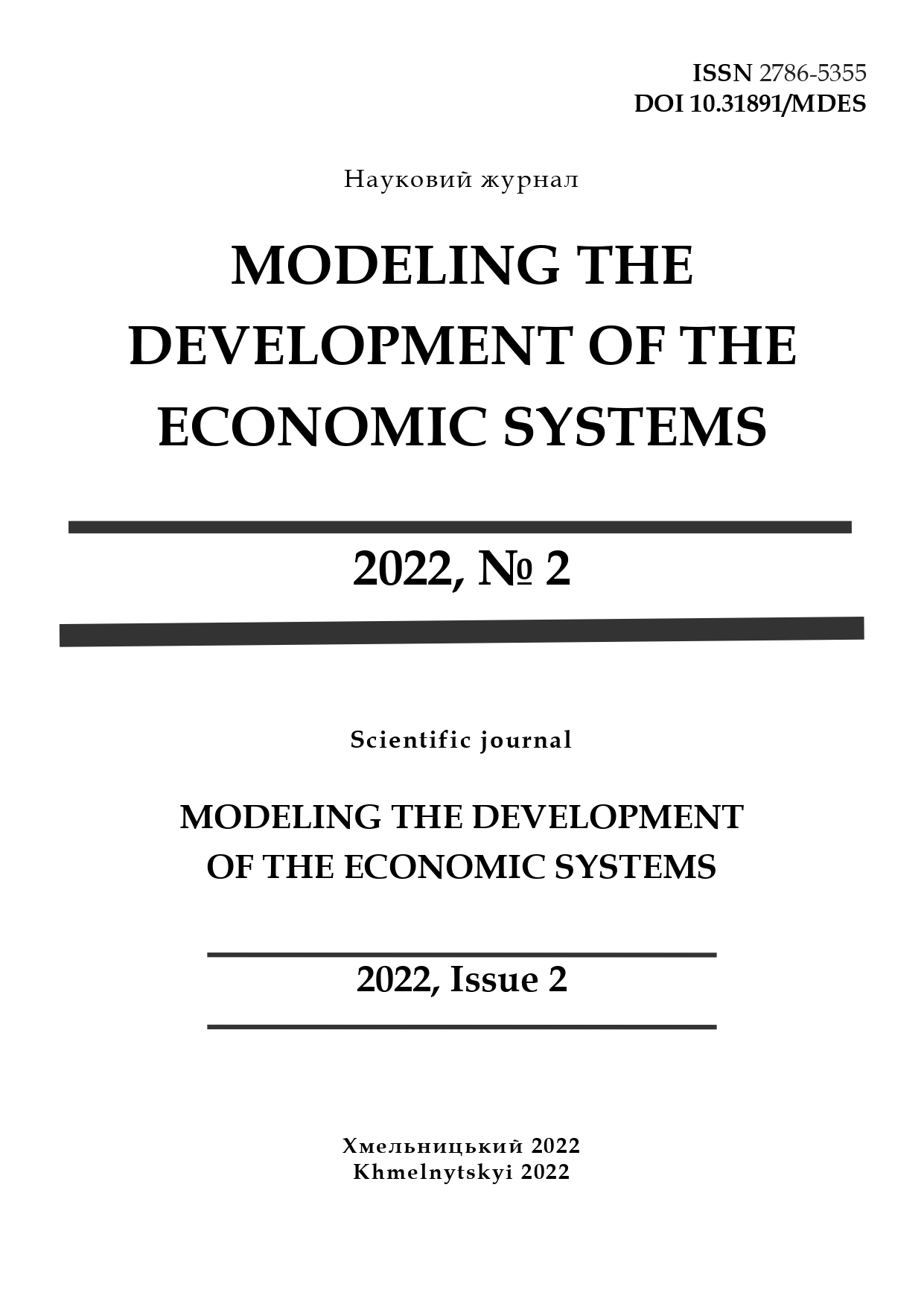РОЗВИТОК МЕТОДИКИ ПЛАНУВАННЯ ФІНАНСОВОЇ СТІЙКОСТІ СУБ’ЄКТІВ ГОСПОДАРЮВАННЯ
DOI:
https://doi.org/10.31891/mdes/2022-4-4Ключові слова:
суб’єкти господарювання, фінансовий стан, управління фінансами, фінансова стійкість, планування, методичні підходи, аналізування, забезпеченняАнотація
У дослідженні розкрито актуальність, по-перше, забезпечення фінансової стійкості суб’єктів господарювання за сучасних умов; по-друге, використання в таких цілях якнайкращих методичних підходів, що дозволяє забезпечити високу якість управління в цій сфері та від чого в значній мірі залежить фінансова безпека суб’єкта бізнесу. Визначено базисні завдання методики планування фінансової стійкості суб’єкта господарювання, які стосуються складання прогнозного балансу, узагальнення очікуваних змін в активах та пасивах балансу внаслідок виконання всіх планових показників, оцінки ймовірного фінансового стану суб’єкта господарювання протягом та на кінець планового періоду, обґрунтування заходів щодо забезпечення фінансової стійкості та платоспроможності. На основі даних досліджуваного суб’єкта господарювання складено прогнозний баланс активів і пасивів суб’єкта господарювання на кінець 2022 р. На основі розрахованих даних прогнозного балансу визначено значення планових показників фінансового стану суб’єкта господарювання на 2022 р. Здійснено критеріальну оцінку планових параметрів фінансової стійкості та розроблено плановий баланс грошових потоків суб’єкта господарювання на 2022 р.
Посилання
Blank, Y. A. (2001). Financial management. Kyiv: Nyka-Tsentr. 528 р.
Vasyltsiv, T. G., Yaroshko О. R. (2018). Financial security of the enterprise: place in the system of economic security and priorities of strengthening at the post-crisis stage of economic development. Scientific Bulletin of LTEU of Ukraine. Vol. 21.2. pp. 132-136.
Gorjacheva, K. (2003). Fіnancial security of the enterprise. The essence and place in the system of economic security. Economіst. Vol. 8, pp. 65-67.
Zajukova, M. S. (2009). Theory of financial stability of the enterprise. Vinnycja: «Universum». 155 р.
Zubko, T. L. (2016). Assessment of the level of economic security of the communications company. Economy. Management. Business. Vol. 3. pp. 81-88.
Kutsyk, V. І., Lupak, R. L. (2017). Modeling of competitive positions of enterprises of the real sector of the economy in the domestic market. Business Inform. no 12 (479). pp. 244-249.
Lupak, R. L., Didych, А. М. (2017). Economic bases of ensuring the competitiveness of the enterprise in market relations. Scientific Bulletin of LTEU of Ukraine. Vol. 20.6. pp. 248-252.
Lisnichuk, O.A. (2019). Calculation of the rehabilitation potential of the enterprise: foreign experience and domestic practice. Innovative economy. Vol. 5(31). pp. 51–56.
Manojlenko, O.V. (2016). Approaches to assessing the resolution potential of temporarily insolvententities. Economy and state. Vol. 1. pp. 60-63.
Marcyn, V. S. (2008). Reliability, solvency and financial stability – the main components of the financial condition of the enterprise. Economics. Finanse. Law, no. 7, рр. 26–28.
Saveljjeva, A. O. (2018). Financial stability of the enterprise and the factors. Regional economy. Vol. 2. pp. 144-152.
Fokina, N. P., Bokij, V. I. (2003). Economic security of the enterprise – an essential component of financial stability. Actual problems of economics. Vol. 8 (26), pp. 98-110.
Cal-Calko, Ju. S. (2008). Financial analysis. Kyiv: Centr uchbovoji literatury. 566 р.
Samiilenko, H., Kyrychenko, S., Kravchyk, Y., Svinarova, H., & Shevchenko, A. (2021). Assessment of Investment Potential of Regions Under the Impact of the Potential-Forming Space Transformation. IJCSNS International Journal of Computer Science and Network Security, 21(10), 250-256.
Vasyltsiv, T. G., Lupak, R. L., Kunytska-Iliash, M. V. Strategic approaches to the effective use of intangible assets as a condition for strengthening the competitiveness of enterprise. Scientific Bulletin of Polissya. № 2 (14). pp. 8-15.




